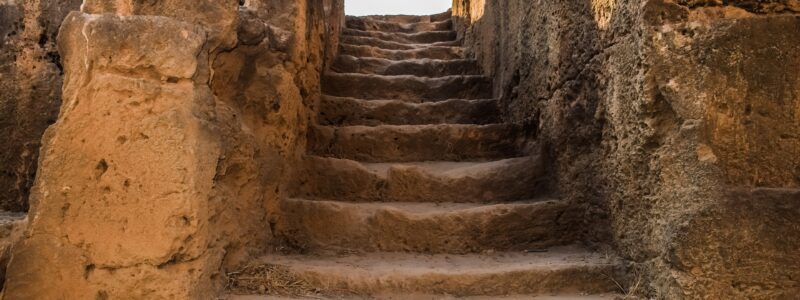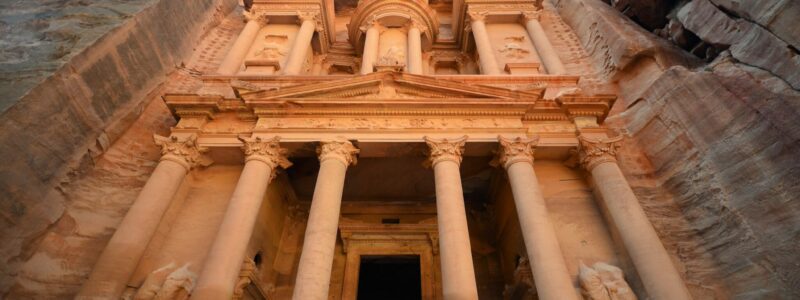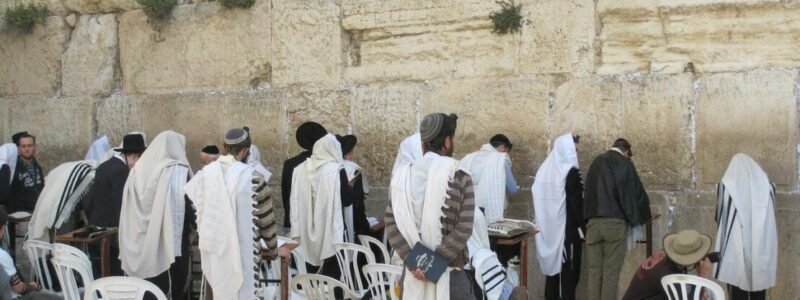Copper Mines in Israel
Archaeologists discovered the vast wealth of Biblical King Solomon partially derived from his copper mines. He is recognized as having been one of the richest people to have ever lived. Other countries paid Solomon about 25 tons of gold for each of the 39 years of his reign. This money went into building projects throughout the realm but especially in Jerusalem.
His estimated fortune is estimated to have been around $2 trillion in today’s currency. That would be much more than J.D. Rockefeller who had a peak net worth of a paltry $367 billion.
And yet, there are many who believe Solomon is a mythical legend from a people trying to glorify his past. Others say he might have lived at one time, but not as a ruler over a vast empire. Instead, secular historians suggest he was just a small-time leader of a migrant ancient people.
Solomon is said to have riches from many sources and taxed his people heavily in order to fund his kingdom. One source of his wealth was from copper mining. But many have argued that while the Bible does reference copper as being in the Promised Land, there is little further mention in Scripture.
Copper Mines and Dung

Copper mines found in a desert: Image by Falkenpost from Pixabay
Parts of Israel are very hot and dry. The Dead Sea Scrolls were preserved for centuries in this arid environment.
But it still came as a surprise that other organic artifacts could have similarly survived.
The Timna Valley is an area in southern Israel that has ancient copper mines. The question has been, how ancient?
University of Tel Aviv archaeologist Erez Ben-Yosuf was exploring the area in 2013 and came across what appeared to be animal dung. The dung still contained undigested plant matter and so it was thought to be of relatively recent origin. Ben-Yosef noted,
We thought maybe some nomads had camped there with their goats a few decades ago.
They radiocarbon tested a dung sample and the results greatly surprised them.
But the [radiocarbon] dates came back from the lab, and they confirmed we were talking about donkeys and other livestock from the 10th century B.C. It was hard to believe.
Three Thousand Year Old Dung
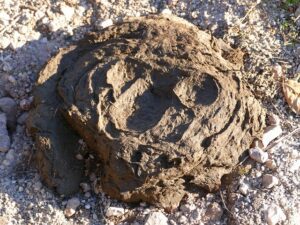
Dung was carbon dated to time of King David: Image by kurt duschek from Pixabay
The implications of the three millennia-old dung were quite exciting. The high precision radiocarbon dating of the dung and of other artifacts found at the archaeological site demonstrated the mining camp itself was 3000 years old.
This timing placed it squarely in the time frame of the Biblical legendary Kings David and Solomon.
According to Scripture, Solomon was very wealthy and engaged in many building projects, not the least of which was the First Temple. This required large amounts of gold and bronze. Bronze is an alloy consisting primarily of about ninety percent copper with tin and other metals.
The Temple and various ornaments and utensils would have required vast amounts of copper to manufacture. This would require industrial-sized mining operations somewhere in the Middle East.
However, Scriptures provide no details as to the location of these copper mines.
Copper Mines in Israel Found
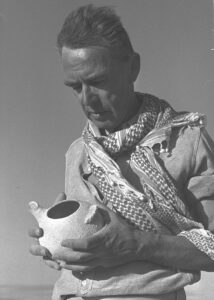
Nelson Glueck: By Moshe Pridan – This is available from National Photo Collection of Israel, Photography dept. Goverment Press Office (link), under the digital ID D520-070.This tag does not indicate the copyright status of the attached work. A normal copyright tag is still required. See Commons:Licensing for more information., Public Domain, Link
Nelson Glueck was an American archaeologist from the 1930s who was searching for these minds during his explorations in Southern Israel. The copper-rich Arabah Valley straddling the border between Israel and Jordan was a prime candidate for the location of these mines.
Glueck wrote in the February 1944 issue of National Geography concerning the copper mines,
It is now known that along the entire length of the Wadi’Araba there are deposits of copper and iron.
He noted,
These were intensely worked in ancient times, particularly during the time of King Solomon.”
Many subsequent archaeologists since Glueck’s time argued that David and Solomon were not the powerful kings described in Scripture but were little more than heads of regional nomad tribes.
Scientists considered these ancient civilizations to be incapable of large-scale copper mining and building projects.
Disputed Findings
Critics had a field day with Glueck’s assertions he had found the copper mines used by King Solomon. Thomas Levy, professor of archaeology at the University of California, San Diego noted,
Glueck became a laughingstock in the scholarly world.
Archaeologists asserted these mines were more likely in the land of Edom than in ancient Israel and were not the source of copper used for the Jerusalem Temple. This would require far too much skill and organization from a primitive nomadic people.
Recent discoveries seem to vindicate Glueck’s assertions that these might be related to King Solomon and not nomadic people.
Levy began a large archaeological project in the same area as Glueck did multiple decades previously. It is a site now located in southern Jordan that Glueck suggested was the location of ancient Solomon’s mines.
Levy and his team dug down further trough copper slag waste until they reached the bottom. They were able to show the metal had been mined there extensively. Levy wrote,
Our excavations are providing support for many of Glueck’s insights.
Other copper findings in the Timna Valley while not yet linked to Solomon, do show the extensive nature of ancient copper mining.
Copper Mines in Israel as a Military Target
Archaeologists maintain the mines were very valuable and likely fought over. There are fortified walls around the smelting camp showing it was likely a military encampment.
This encampment may have guarded the vast riches of copper located there. This copper would provide an excellent target for foreign invaders.
Scripture indicates King David went deep into the desert to engage the Edomites in battle. This history is still debated by secular archaeologists who doubt the military capability of David.
If the Biblical claims are true, it helps to validate some of ancient Israel’s history. David may have been able to demand tribute from the Edomites in the form of copper which he stored for his son Solomon to build the Temple. As Ben-Yosef notes,
There’s a serious possibility that Jerusalem got its wealth from taxing these mining operations.
Long Distance Trading
Archaeologists discovered the dung near ancient copper mining operations. It still contains intact seeds and pollen spores allowing archaeologists to determine the animals’ diet.
The feed was imported from more than 100 miles to the north of where the dung was found.
Long-distance trade was key to survival for those living in the desert. Donkeys were the main beasts of burden in those days, bringing in supplies and taking out copper and manufactured products. Water was also scarce and had to be brought in from the nearest water source about twelve miles away.
This shows the sophistication of the copper mine operation three thousand years ago.
Ben Yusef notes,
Metal in this period was an essential product, similar to the oil of today. … So it was worth these peoples’ while to invest so much in this operation in the middle of the desert.
The archaeologists found more than 1000 tons of smelting debris along with the animal dung. Either the Israelites or the Edomites could have mined this copper – a current point of contention.
Ben-Yusef sums up by noting,
But now we not only know that this was a source of copper, but also that it’s from the days of King David and his son Solomon.
Conclusion
The discovery of large copper mines in the desert lands of Israel and Jordan support the Biblical narrative in many ways
The Israelites were not just a primitive tribe three thousand years ago but were a fighting force with organizational ability. They were capable of huge mining efforts and transporting copper to Jerusalem about two hundred miles away.
The findings also support the Biblical narrative of these ancient kings, as well as their historicity. Many now regard King David and Solomon as rulers of a sophisticated empire rather than just regional warlords.
Recent archaeological findings support the historicity of King David and that he was a force to be reckoned with.
Artifacts have been found which support their historicity – not the least of which are vast copper mines.



